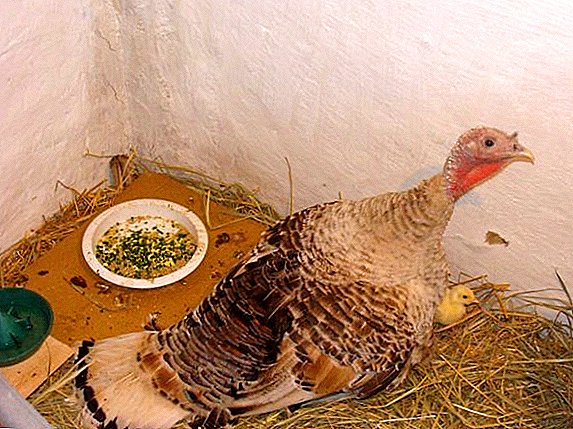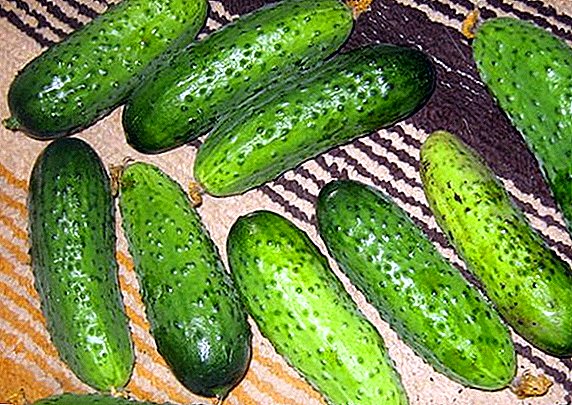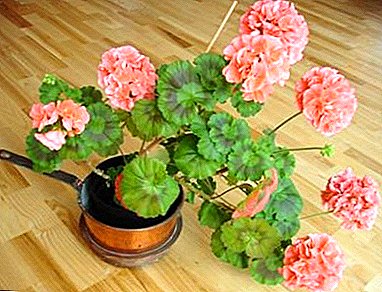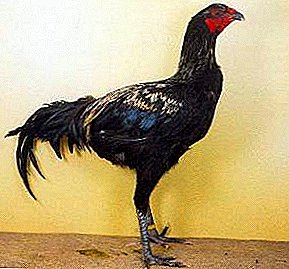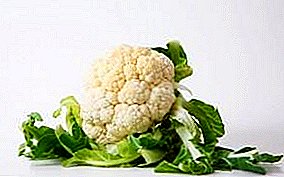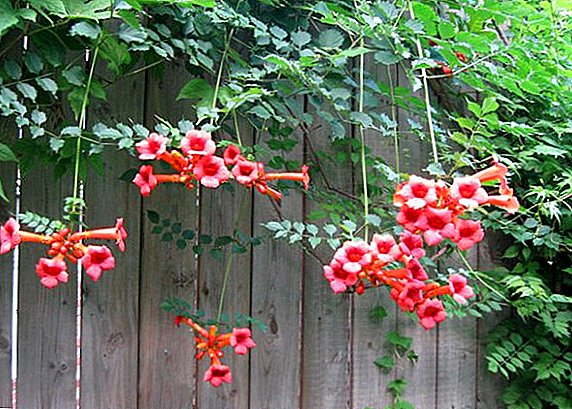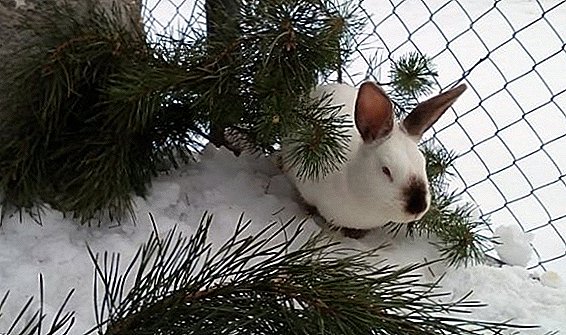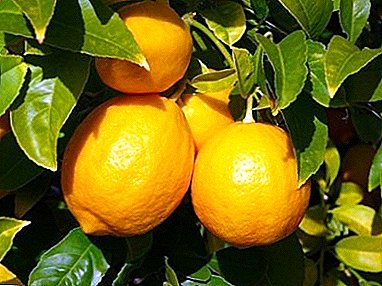
Lemon - one of the most common and favorite citrus trees in home culture. The fashion for this plant appeared in our country in the era of Peter the Great.
Currently, it serves as a wonderful decoration of the interior of urban apartments. Among the various species, a special place belongs to the Pavlovsky lemon.
Origin
In the 19th century in the small town of Pavlov, located on the Oka River, there lived a merchant Karachistov I.S. The merchant was notable. He often traveled around the world and brought various curiosities to his homeland. Once he brought a citrus tree from Turkey.
It immediately fell in love with the residents of the town and many wanted to grow Pavlovsky lemon at home. The fashion for citrus began to grow. In the thirties, even an enterprise appeared in the city, where they studied the peculiarities of Pavlovsky lemon.
Description and characteristics
Pavlovsky lemon has its own individual characteristics and qualitiesto distinguish it from other citrus fruits.
The appearance of the tree
- Compact shrub, reaching 0.9-1.5 meters in length. The crown is leafy, round, with a diameter of 1-1.2 meters, with 3-4 skeletal branches of olive-gray color. Young shoots with dark green bark. On the branches visible longitudinal cracks and long sharp spines.
- The leaves are large (13 cm), pointed, with a wedge-shaped base. The form may vary from broadly to oblong, obovate. The leaves are glossy, bright, green. Stalk shortened.
- The flowers are bisexual, large, are formed singly in inflorescences or leaf axils of 2-3 pieces. The flowering period occurs in early spring or autumn.
Fruit
- Tied to the third, fourth year of life. The first yields are small. An adult plant (15-20 years old) bears more fruit.
- Fruits ripen in 30-35 days, and end growth only 9-10 months after flowering. With a lack of lighting, these processes are delayed up to 1 year.
- Fruits are formed by 5-10 pieces on the tree. Lemons are yellow, juicy, often seedless, parthenocarpic form.
- Flower growers are advised to harvest in time, as overripe fruits begin to lose their taste and decorative qualities.
A photo
Pavlovsky lemon variety: photo of a tree and its fruits.



Next, we will talk about Pavlovsky Lemon: home care, reproduction and illness.
Care
Growing a tree is not difficult. For good growth and development just follow the simple care guidelines.
After the purchase
Proper care of the plant starts with a transplantwhich is carried out immediately after purchase. The container and the substrate in which the tree is located in the store are not suitable for permanent maintenance.
Lighting features
Plant likes a well-lit room. With its deficiency can slow down the growth, ripening of fruits. But, the lemon does not tolerate direct sunlight.
- On summer days, do not leave the pot in the open windowsill. Create ambient lighting conditions.
- In autumn and winter, the days are often overcast. Use additional light sources.
Air temperature
In spring and summer maintain a warm or moderate temperature - 19-23 degrees. In winter it is reduced to 15-16 degrees.
- Lemon does not like drafts, sudden changes in temperature.
- In the summer, in good weather, you can take it outside to bask in the sun and get some fresh air.
Watering
 Moisturize the soil need regularly and abundantly. In the summer, 2-3 times a week, in winter it is enough once.
Moisturize the soil need regularly and abundantly. In the summer, 2-3 times a week, in winter it is enough once.
- For irrigation, use water at room temperature, settled for 20-24 hours. Flowing cold water can not be used.
- If in the winter you keep the plant in a warm room, you need to water it with heated water. The root system requires the same mode as for the above-ground part, otherwise the water supply from the roots to the leaves may be delayed. As a result of improper moistening of the soil, the lemon will start dropping foliage and stop fruiting.
- Monitor the state of the substrate. Avoid stagnant water that can trigger root rot.
Humidity
Keep indoors humidity about 60-65%. In the summer often spray leaves with water.
Bloom
Have to for spring and early autumn. With proper, regular care can last for a year. Observe the correct mode of irrigation and moistening of the substrate.
The soil
Suitable for lemon light, fertile soil with a good supply of organic and mineral substances. It should be loose, pass moisture and oxygen.
Top dressing
Fertilizers begin to make for 3 years after landing. Young plants do not need it.
- As a fertilizer suitable special ready-made organic fertilizer.
- You can cook it yourself from the infusion of egg shells. It is a good stimulant for fruiting. To improve growth, you can use a solution of ammonium nitrate in proportions of 25-30 grams per liter of water. Sometimes you can fertilize the tree infusion of horse manure.
Transfer
Young trees are transplanted once a year., adult only when needed.
- The tree is carefully removed from the tank, shake off the roots of the old substrate.
- Rotted, damaged, diseased roots must be removed.
- Then drainage is poured at the bottom of the tank, a new substrate is planted and the plant is planted, slightly tamping down on top of the ground. If the old soil is in good condition, it can be transplanted by transshipment method.
- Planted in a moist soil.
Breeding
At home, the tree is propagated seed or grafting. Both methods have their advantages and disadvantages.
- Trees grown from seeds have a more stable immunity, grow well, bear fruit better. In this case, the plant may differ from the parent in biological characteristics. Fruiting begins only 8-10 year.
- When grafting, a lemon will have 100% similarity with the parent. The tree quickly enters fruiting - for 2-3 years of life. At the same time it is sensitive to errors in care, it is vulnerable to diseases.
Seeds

- Planting is carried out in late spring and summer.
- Seeds are extracted from lemon, the largest and properly shaped ones are selected. It is better to prepare a few seeds taken from different fruits.
- For planting, you can take wooden boxes or small pots. A mixture consisting of peat and floral soil will be suitable as a substrate. At the bottom of the tank must be placed drainage.
- Seeds deepen into the substrate by about 1 centimeter, moistened with a sprayer.
- Seedlings are kept in a warm room and well lit, regularly moisturize the soil, protect against temperature drops and drafts. The first shoots will appear on the 10-14 day.
- For good development, it is preferable to create greenhouse conditions. Sprout covered with a glass jar, and watering produced in the pan. Once a day, the jar is removed to allow the plant to air and breathe.
- The glass is removed when the first leaves appear. At this time, you can transplant the sprout in a separate container for further cultivation.
Cuttings
- To this end, a cutting (10–13 cm) is cut from the autumn healthy growth in early spring. The cut must be made with a knife at a sharp angle. On the handle should be at least 4-5 leaves.
- First, the bottom two leaves are removed from the cutting. The rest can be left or cut in half.
- Before planting, the cuttings can be dipped into a growth solution that is prepared from 25 mg of indolyl butyric acid and 0.1 g of heteroauxin (in proportion to one liter of water).
- If a growth stimulator is not used, the cut is processed with crushed coal before planting.
- The handle is placed in a container at right angles. At the bottom of the pot piled drainage and leaf earth. Topsoil should consist of sand or a mixture of sphagnum and sand.
- Grown in greenhouse conditions, covered with a can. After 2-3 weeks they will take root.
And then there are videos about Pavlovsky lemon: care at home, pruning, breeding and more.
And one more video about Pavlov's lemon: care at home.
Diseases and pests
 Improper care can cause growing problems.
Improper care can cause growing problems.
- Most often, a lemon is affected by aphid, spider mite and scab. A good measure of prevention from them can be a simple indoor geranium, which is placed next to the plant. Its smell repels insects and protects the plant.
- You can get rid of pests by spraying from a solution of onion peel or red bitter pepper.
- Excessive fertilization of the soil can lead to homosis. The lower part of the cortex begins to die off, the leaves fall, and cracks form on the trunk. To deal with this problem will help treatment Bordeaux mixture or copper sulphate.
- Excessive watering leads to the formation of root rot. Disease insidious. If the tree is not transplanted in time, it may die. During transplantation, the roots are thoroughly washed under running water, the damaged parts are removed and treated with a solution of potassium permanganate.
Growing a Pavlovsky variety is not difficult, although this process requires responsibility, attention and strict adherence to care recommendations for the plant. But, the result of labor is worth it.
Lemon will be a real decoration of your apartment, will delight with decorative qualities and abundant fruiting.


